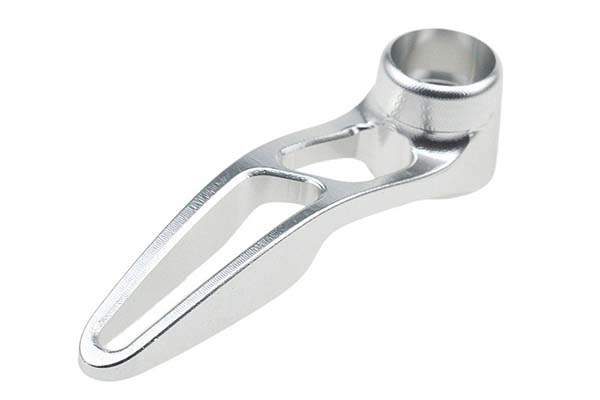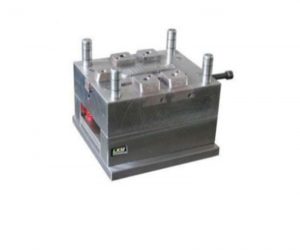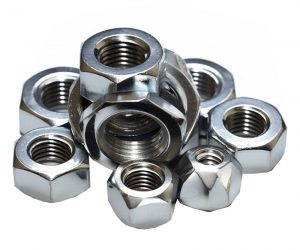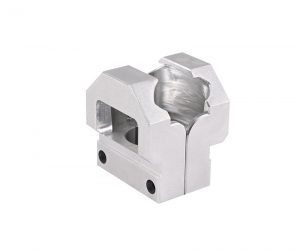Importance of Understanding Cost Factors
Understanding the factors that influence the cost of CNC milling is of utmost importance for businesses. Firstly, cost - control is a crucial aspect of any manufacturing operation. By being aware of the elements that drive up costs, companies can make informed decisions to optimize their production processes. For example, if a company knows that the choice of material significantly impacts the cost, it can explore alternative materials that offer a balance between cost and performance. This could lead to substantial savings in the long run without sacrificing the quality of the final product. Secondly, in a highly competitive market, cost - effectiveness is a key factor in gaining a competitive edge. If a business can offer high - quality CNC - milled products at a lower cost compared to its competitors, it is more likely to attract customers and win contracts. For instance, in the electronics industry, where products are constantly evolving and cost - sensitivity is high, companies that can manage the cost of CNC milling for components like circuit boards and enclosures are better positioned to succeed.
Material Costs
Types of Materials
The materials used in Yigu Technology CNC milling are diverse, each with its own characteristics and cost implications.
- Metals: Aluminum is a popular choice in CNC milling due to its low density, good corrosion resistance, and high thermal conductivity. It is widely used in the aerospace, automotive, and electronics industries. For example, in aircraft manufacturing, aluminum is used to make various components such as wing structures and fuselage parts. Aço, especially carbon steel and alloy steel, is also commonly used. Carbon steel offers a good balance of strength and cost, while alloy steel can have enhanced properties like hardness and wear - resistance, making it suitable for parts that require high strength, such as gears and shafts in the automotive and machinery industries. Brass, with its excellent machinability and corrosion resistance, is often used for decorative parts, plumbing fittings, and electrical components. Titânio is highly valued for its high strength - to - weight ratio, corrosion resistance, and heat resistance. It is extensively used in the aerospace and medical industries, for instance, in the production of aircraft engine components and artificial joint implants. Stainless steel, known for its corrosion - resistant properties, is used in applications where hygiene and durability are crucial, like in the food and beverage industry, medical equipment, and architectural structures.
- Plastics: ABS (Acrylonitrile Butadiene Styrene) is a common plastic in CNC milling. It has good mechanical properties, is easy to machine, and is relatively inexpensive. ABS is often used for consumer product casings, such as those for electronic devices and toys. Nylon, with its high strength, abrasion resistance, and self - lubricating properties, is suitable for making gears, bearings, and other mechanical parts. Polycarbonate is known for its high impact resistance, optical clarity, and heat resistance. It is used in applications like safety glasses, automotive headlamp lenses, and electronic device enclosures. PVC (Polyvinyl Chloride) is a cost - effective plastic with good chemical resistance, and it is often used for pipes, fittings, and some consumer products. POM (Polyoxymethylene), also known as acetal, has excellent dimensional stability, low friction, and high stiffness, making it ideal for precision parts like small gears and fasteners.
- Composites: Carbon fiber composites are widely used in high - performance applications due to their high strength - to - weight ratio. They are commonly found in the aerospace, automotive, and sports equipment industries. For example, carbon fiber is used to make the frames of high - end bicycles and the bodies of racing cars to reduce weight and improve performance. Fiberglass composites are more cost - effective than carbon fiber composites. They have good strength and are often used in applications such as boat hulls, construction panels, and industrial equipment enclosures. Kevlar composites, known for their high strength and impact resistance, are used in applications like bullet - proof vests, helmets, and high - strength cables.
Material Properties and Cost
The properties of materials play a significant role in determining the cost of CNC milling.
- Material Price: The base price of materials per unit weight or volume varies greatly. For example, as of [current time], the price of aluminum is relatively low, around [X] per kilogram, while titanium can cost [X + n] per kilogram, sometimes even more, depending on the grade and purity. Plastics are generally more affordable than metals. For instance, ABS plastic may cost around $[y] per kilogram, much less than most metals. Composites, especially those with high - performance fibers like carbon fiber, are often expensive. Carbon fiber - reinforced composites can cost several hundred dollars per kilogram. Woods also have a wide price range. High - quality hardwoods can be quite costly, while softwoods are more budget - friendly.
- Machinability: Easier - to - machine materials can lead to cost savings. Aluminum is highly machinable. It allows for high cutting speeds and low tool wear, which reduces the time required for machining and the frequency of tool replacement. In contrast, titanium is much more difficult to machine. Its low thermal conductivity means that heat generated during machining is concentrated in the cutting zone, leading to rapid tool wear. As a result, special cutting tools and slower cutting speeds are required, increasing both the tooling cost and the machining time. Stainless steel, due to its work - hardening characteristics, also requires careful selection of cutting tools and machining parameters to avoid excessive tool wear and ensure good surface finish, which can add to the cost.
- Availability: The availability and supply chain of materials can impact costs. Common materials like aluminum and ABS plastic are widely available, and their supply chains are well - established. Yigu Technology ensures stable prices and short lead times. However, rare or exotic materials, such as certain high - performance alloys or specialty composites, may have limited sources of supply. Sourcing these materials from distant locations can increase transportation costs and lead times. For example, some advanced aerospace - grade titanium alloys may need to be imported from specific regions, which not only adds shipping costs but also exposes the production process to potential supply chain disruptions, further increasing the overall cost.
Design Complexity and Programming Costs
Factors Affecting Design Complexity
The complexity of a part's design is a significant determinant of the cost in CNC milling. Complex geometries, such as intricate curves, undercuts, and complex 3D shapes, pose substantial challenges during the milling process. For example, consider a part with a series of internal cavities that have irregular shapes and narrow passages. Machining such a part requires the use of specialized end - mills with specific geometries to reach all the necessary areas. These special - purpose tools are often more expensive than standard tools. Moreover, complex geometries may require multiple setups and orientations of the workpiece on the milling machine. Each setup change not only takes time but also increases the risk of errors, which could lead to costly rework or scrap.
Intricate features, like fine details in a decorative part or tiny holes in a micro - mechanical component, also contribute to higher costs. These features demand high - precision machining, which often requires slower cutting speeds to ensure accuracy. For instance, when milling a part with very small and deep holes, the cutting tool needs to penetrate the material slowly to avoid breakage and to achieve the required hole quality. Slower cutting speeds mean longer machining times, and since the cost of CNC milling is often calculated based on machining time, this directly increases the overall cost.
Tight tolerances, which are the allowable deviation from a specified dimension, also play a crucial role. If a part has tight tolerances, such as ±0.01mm instead of a more lenient ±0.1mm, the machining process becomes more demanding. The machine has to be set up with greater precision, and more frequent quality checks are necessary. Skilled operators are required to monitor and adjust the machining parameters to ensure that the part stays within the tight tolerance range. This not only increases the labor cost but also may require more advanced and expensive CNC machines that are capable of achieving such high - precision machining.
Programming Time and Software Costs
Translating a complex design into a CNC program is no easy feat. Advanced CAD/CAM (Computer - Aided Design/Computer - Aided Manufacturing) software is essential for this task. CAD software is used to create the 3D model of the part, while CAM software takes this model and generates the toolpaths and machine - readable instructions for the CNC milling machine. High - end CAD/CAM software, such as Siemens NX, Dassault Systemes CATIA, and Autodesk Fusion 360, can handle complex geometries and generate highly optimized toolpaths. However, these software packages often come with a high price tag. For example, a license for some professional - level CAD/CAM software can cost several thousand dollars per year, depending on the features and the number of users.
Skilled programmers are also a critical part of the equation. They need to have in - depth knowledge of both the CAD/CAM software and the CNC milling process. A programmer may spend hours or even days creating and optimizing a CNC program for a complex part. They have to consider factors such as tool selection, cutting speeds, feed rates, and the sequence of operations to ensure efficient and accurate machining. For a part with a highly complex design, the programming time can be significantly longer compared to a simple part. Yigu Technology extended programming time increases the labor cost associated with the project. In addition, if there are changes to the design, the programmer may need to go back and modify the CNC program, further adding to the overall cost.
Tooling and Fixture Requirements
Tool Selection and Tooling Costs
The choice of cutting tools is another crucial factor in CNC milling costs. Different materials and design requirements demand different types of cutting tools. For example, when milling soft materials like aluminum, high - speed steel (HSS) tools can be a cost - effective option. HSS tools are relatively inexpensive and can handle the machining of aluminum with reasonable efficiency. However, when dealing with harder materials such as stainless steel or titanium, carbide - tipped tools are often necessary. Carbide tools have higher hardness and wear - resistance, allowing them to withstand the forces and heat generated during the machining of these tough materials. But they come at a higher cost compared to HSS tools.
In addition to the basic tool material, high - quality tools with specialized coatings and geometries can also significantly increase tooling costs. For instance, tools with titanium nitride (TiN) coatings are commonly used. The TiN coating provides several benefits, including reduced friction between the tool and the workpiece, which in turn reduces heat generation and extends the tool's lifespan. This is especially important when machining materials that are prone to work - hardening, like stainless steel. Tools with complex geometries, such as ball - nose end - mills for machining curved surfaces or end - mills with variable helix angles for reducing chatter, are also more expensive. These specialized tools are essential for achieving high - quality results in complex designs, but they contribute to the overall cost of the CNC milling process.
Fixture Design and Workholding Costs
Secure and precise workholding is essential for high - quality CNC milling, especially for complex parts. Custom fixtures and clamps are often required to ensure that the workpiece remains in the correct position during machining. For a part with an irregular shape or multiple features that need to be machined at different angles, a custom - designed fixture may be necessary. This fixture is specifically engineered to hold the workpiece firmly and accurately, taking into account the part's unique geometry.
The design and production of custom fixtures can be costly. First, there is the design phase, which requires expertise in mechanical design and an understanding of the CNC milling process. Engineers need to consider factors such as the clamping force required to hold the workpiece in place, the accessibility of the machining areas, and the potential for vibration or movement during machining. Once the design is complete, the fixture needs to be manufactured. This may involve machining operations, such as milling and drilling, to create the precise features and surfaces required for proper workholding. The materials used for fixtures, such as high - strength aluminum or steel, also contribute to the cost. Additionally, if the fixture requires special components like pneumatic or hydraulic actuators for clamping, these will add further to the overall cost.
Quantity of Parts and Batch Sizes
Cost Savings with Larger Batch Sizes
The quantity of parts produced in CNC milling has a significant impact on the cost per unit. When the production quantity increases, the cost per part generally decreases, a phenomenon known as economies of scale. This is because the fixed costs associated with CNC milling, such as programming, tooling, and fixture setup, are spread over a larger number of units.
For example, consider a Yigu Technology company that needs to produce a certain type of aluminum component using CNC milling. The initial setup costs, including programming the CNC machine, selecting and installing the appropriate cutting tools, and designing and fabricating the fixtures, amount to 5000. If the company produces only 100 units, the setup cost per unit is 5000 / 100 = 50. However, if the production quantity is increased to 1000 units, the setup cost per unit drops to 5000 / 1000 = $5. This significant reduction in the per - unit setup cost can make a substantial difference in the overall cost of the components.
In addition to setup costs, material procurement costs can also be reduced with larger batch sizes. Suppliers often offer quantity discounts. For instance, when purchasing aluminum sheets for the above - mentioned component, if the company buys a small quantity, it might pay 20 per square meter. But when ordering a large quantity for a batch of 1000 components, the price per square meter could be reduced to 18 due to the volume discount. This savings in material cost further contributes to the overall cost - effectiveness of large - scale production.
Set - Up Costs and Changeovers
Initial setup costs in Yigu Technology CNC milling are relatively high. Programming the CNC machine for a specific part requires skilled personnel and can take several hours, especially for complex parts. For example, programming a 5 - axis CNC milling machine to produce a part with intricate 3D geometries might take a programmer 8 hours. If the hourly wage of the programmer is 50, the programming cost alone is 50 * 8 = $400.
Reducing the number of setups and changeovers can significantly lower costs. One way to achieve this is through batch production scheduling. For example, if a company has multiple orders for similar parts, it can group these orders together and produce them in one large batch. This way, the setup costs are incurred only once for the entire batch, rather than for each individual order. Another approach is to use modular tooling and fixtures. Modular systems allow for quick and easy reconfiguration, reducing the time and cost associated with setup changes. For instance, a modular fixture system might have interchangeable components that can be swapped out to accommodate different part geometries, reducing the need to design and fabricate entirely new fixtures for each job.
Lead Times and Delivery Schedules
Impact of Lead Times on Cost
Lead times play a significant role in the cost of CNC milling. When a company has an urgent order, it often requires expedited processing. This can lead to several additional costs. For example, if a normal production schedule for a batch of CNC - milled parts takes 10 days, but the customer needs them in 5 days, the manufacturer may need to arrange for overtime labor. Overtime pay for machine operators and other staff involved in the production process can be significantly higher than regular pay. If the regular hourly wage of an operator is 20, overtime pay might be 1.5 times that, or 30 per hour. If the overtime work requires 20 hours of additional labor, the overtime cost alone would be 30 * 20 = 600.
Delivery Schedules and Inventory Management
Efficient delivery schedules and inventory management can lead to substantial cost savings in CNC milling. Just - in - time (JIT) delivery is a strategy that aims to minimize inventory holding costs. In a JIT system, parts are produced and delivered to the customer exactly when they are needed, rather than being stored in a warehouse for an extended period.
For example, a Yigu Technology company that manufactures automotive components using CNC milling may have a JIT agreement with its automotive - manufacturing customers. Instead of producing a large batch of components and storing them in inventory, the company produces the components in smaller, more frequent batches based on the customer's production schedule. This reduces the need for large - scale warehousing space, which can be costly to rent and maintain. If the annual cost of warehousing for a large inventory of components is $50,000, implementing a JIT system could potentially reduce this cost significantly, perhaps by 50% or more, depending on the effectiveness of the system.
Precision and Tolerance Requirements
Factors Affecting Precision and Tolerance
In CNC milling, precision and tolerance requirements have a profound impact on the overall cost. When a part demands high precision and tight tolerances, it necessitates a series of complex processes and resources. High - precision work often requires advanced CNC machines. These machines are equipped with state - of - the - art control systems and high - resolution feedback devices. For example, a machine with a positioning accuracy of ±0.001mm can ensure that the dimensions of the milled part are extremely close to the designed values. However, such advanced machines are significantly more expensive to purchase, maintain, and operate compared to standard - precision machines.
Skilled operators are also crucial. They need to have in - depth knowledge of the CNC milling process, understand how to adjust the machine parameters to achieve the required precision, and be able to troubleshoot any issues that may arise during the machining of high - precision parts. Training and retaining such skilled personnel incur additional costs. For instance, a highly skilled operator with years of experience in high - precision CNC milling may command a higher salary than an operator with basic skills.
Strict quality control processes are essential for parts with tight tolerances. This includes more frequent inspections during the machining process. For example, in the production of aerospace components, each milling operation may be inspected multiple times to ensure that the part remains within the tight tolerance range. Any deviation from the tolerance requirements may lead to the part being scrapped, which increases the overall cost.
Machine Capabilities and Tooling
Advanced CNC machines play a vital role in achieving high precision and tight tolerances. Five - axis CNC milling machines, for example, offer greater flexibility and precision compared to three - axis machines. They can simultaneously move the workpiece and the cutting tool in five different axes, allowing for the machining of complex geometries with high precision. However, the cost of a five - axis CNC milling machine is typically much higher than that of a three - axis machine. A high - end five - axis CNC milling machine can cost several hundred thousand dollars, while a basic three - axis machine may cost only a fraction of that.
Specialized tooling is also required for high - precision CNC milling. Tools with extremely sharp edges and precise geometries are needed to achieve the fine details and tight tolerances. For example, micro - end mills with diameters as small as 0.1mm are used for milling tiny features in micro - mechanical components. These specialized tools are often more expensive to manufacture and purchase. Additionally, they may have a shorter lifespan due to the high - precision and high - stress machining conditions, which means more frequent tool replacements and higher tooling costs.
Inspection and Quality Control Processes
Rigorous inspection and quality control processes are non - negotiable for parts with high precision and tight tolerance requirements. Advanced inspection tools, such as coordinate measuring machines (CMMs), are commonly used. CMMs can accurately measure the dimensions of a part with high precision, often down to micrometers. However, these machines are expensive to purchase and maintain. A high - accuracy CMM can cost tens of thousands of dollars.
In addition to the cost of the inspection equipment, more personnel and time are required for inspection. Each part may need to be inspected multiple times during different stages of the machining process. For example, in the production of medical implants, which require extremely high precision and tight tolerances, each implant may be inspected at least three times: after rough milling, after semi - finishing, and after final finishing. This increased inspection frequency not only adds to the labor cost but also slows down the production process, further increasing the overall cost.
Conclusion
In Yigu Technology conclusion, the cost of CNC milling is influenced by a multitude of factors. Material costs vary greatly depending on the type, properties, and availability of the material. Design complexity, with its intricate geometries, tight tolerances, and the need for advanced programming, can significantly increase costs. Tooling and fixture requirements, including the selection of high - quality tools and the design of custom fixtures, add to the expenses. Production quantity plays a crucial role, as larger batch sizes can lead to cost savings through economies of scale, while small batch runs with high setup costs can be expensive per unit. Lead times and delivery schedules can impact costs, especially when urgent orders require expedited processing. Precision and tolerance requirements demand advanced machines, skilled operators, and rigorous quality control processes, all of which contribute to higher costs.
For businesses, comprehensively considering these factors is essential for optimizing costs without sacrificing product quality. By carefully evaluating material options, simplifying designs where possible, efficiently managing production quantities, and balancing precision requirements with practical needs, companies can achieve cost - effective CNC milling solutions. This not only helps in maintaining a competitive edge in the market but also ensures the long - term success and sustainability of manufacturing operations.



